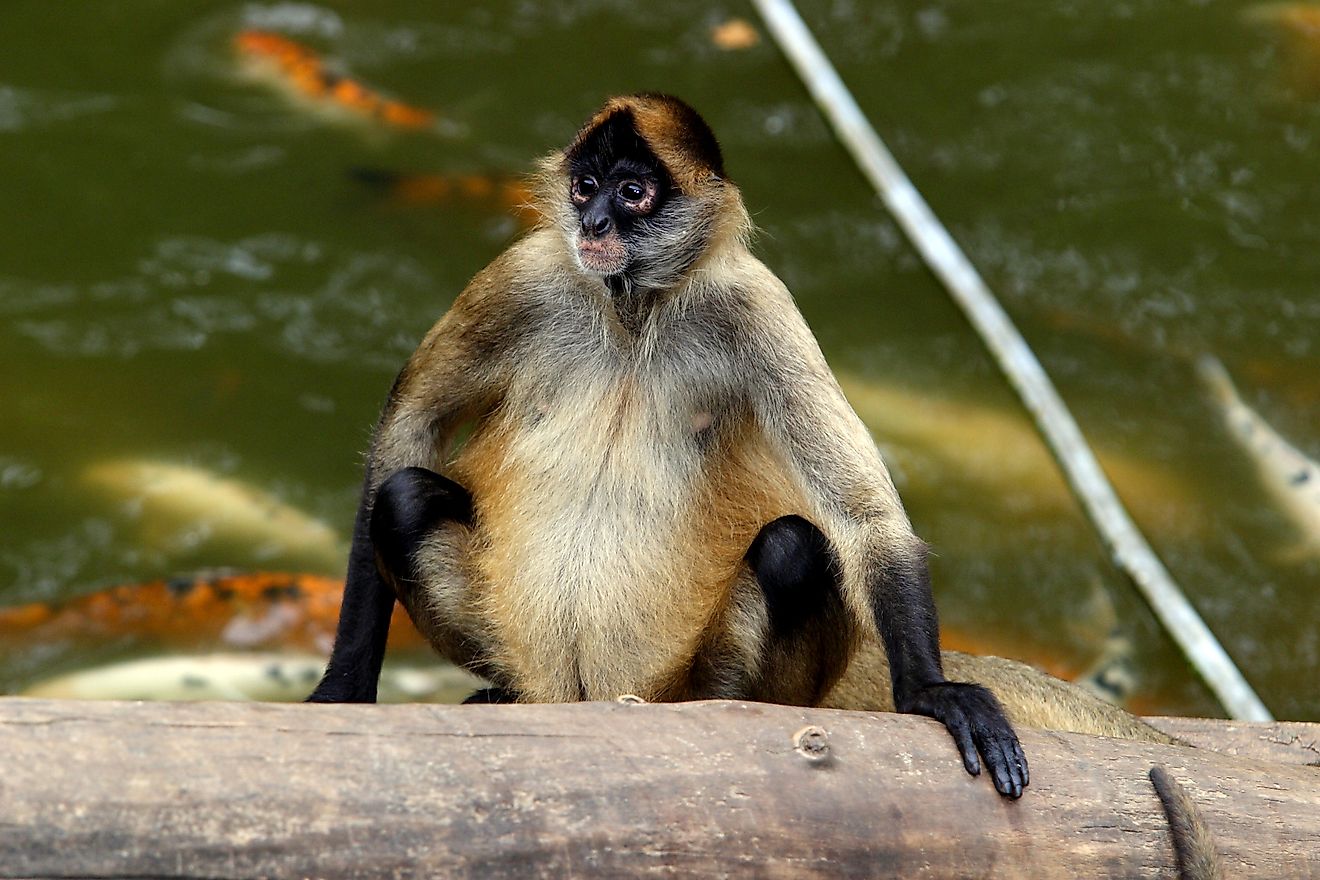Endangered Mammals Of Colombia

Colombia is endowed with a variety of natural eco-regions which are home to an extensive and unique biodiversity including the Andean mountain ranges, the Pacific coastal region, the Amazon rain forest, and other various rivers and inland water systems. These areas offer varieties in climatic and physical conditions which are suitable for various animals making Colombia the second most biodiverse country in the world. Colombia has a broad range of mammals whose numbers are more than 400. Some of these mammals are endangered, and others are critically endangered due to habitat loss and destruction of their habitats.
Endangered Mammals Of Colombia
Black-headed Spider Monkey
The black-headed spider monkey is an arboreal and diurnal primate in South America with habitats in the tropical forests of Colombia, Panama, and Nicaragua. The monkey’s eyes face straight ahead, giving it a high accuracy in estimating and judging distances. The monkey lives on trees in social groups of about 20 individuals in which they forage together for insects, fruits, leaves, seeds, and sometimes eggs. The gestation period for this mammal is 7.5 months with a lifespan of 24 years. The monkey has been listed as a critically endangered species due to the destruction of its habitats and illegal hunting for meat.
Brown spider monkey
The brown spider monkey is a critically endangered terrestrial mammal found in the Andean and the Sierra Nevada ranges of Colombia and Venezuela, predominately in the lowland evergreen forests. Fruits, young leaves, flowers, small insects, aerial roots and honey are the main diet of the brown spider monkey. The monkey feeds from the tree canopies where the species live in social groups of between 20 and 30 individuals. The major threats to this species include habitat loss and illegal hunting. Protected areas have been set up in Tama National Natural Park and Parque Nacional Sierra Nevada Santa Marta to conserve the populations of the brown spider monkey.
Gorgas’s rice rat
The rat is an endangered terrestrial and semi-aquatic species native to Colombia, Bolivia, and Venezuela. The Gorgas’s rice rat is threatened by severe fragmentation of its habitats in the coastal areas of mangrove, freshwater, and salt marshes. The rodent is omnivorous feeding on insects, plant materials, and crustaceans.
Handley’s slender mouse opossum
The Handley’s slender mouse opossum is a critically endangered rodent species native to Columbia. Unlike other opossum, the Handley’s slender mouse opossum lacks a pouch. The species is arboreal and nocturnal and feeds on fruits and insects. Reproduction occurs during the rainy season between September and December. Conversion of forests for agricultural use is the major threat to the populations of this animal, yet no conservation measures have been taken towards its protection.
Issues in the Conservation of Columbia’s mammals
Despite Columbia being a high ranking country regarding its biodiversity, a majority of the mammal species are endangered including the cotton-top tamarin, Pacarana, Ecuadorian sac-winged bat, Colombian weasel, giant otter, Baird’s tapir, mountain tapir and Guajira mouse opossum. Very few conservation measures have been put up with some being the establishment of protected areas within the natural habitats of these species. However, threatening activities such as hunting, deforestation, and clearing of land have not been regulated adequately.
Endangered Mammals Of Colombia
| Endangered Mammals of Colombia | Scientific Name |
|---|---|
| Black-Headed Spider Monkey | Ateles fusciceps |
| Brown Spider Monkey | Ateles hybridus |
| Gorgas's Rice Rat | Oryzomys gorgasi |
| Handley's Slender Opossum | Marmosops handleyi |
| Cottontop Tamarin | Saguinus oedipus |
| Pacarana | Dinomys branickii |
| Ecuadorian Sac-Winged Bat | Balantiopteryx infusca |
| Colombian Weasel | Mustela felipei |
| Giant Otter | Pteronura brasiliensis |
| Baird's Tapir | Tapirus bairdii |
| Mountain Tapir | Tapirus pinchaque |
| Guajira Mouse Opossum | Marmosa xerophila |











